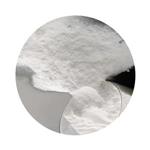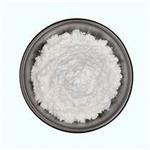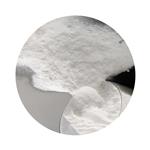Uses of Ursolic acid
Feb 14,2022
Ursolic acid (sometimes referred to as urson, prunol, malol, or 3β-hydroxyurs-12-en-28-oic acid), is a pentacyclic triterpenoid identified in the epicuticular waxes of apples as early as 1920 and widely found in the peels of fruits, as well as in herbs and spices like rosemary and thyme.

Natural occurrence
Ursolic acid is frequently found in the human diet because of its widespread availability in many plants. Ursolic acid is distributed in plants by forming aglycone with free acid or triterpenoid saponins.Malus pumila (apple), Ocimum basilicum (basil), Vaccimum spp. (blueberries), Vaccinium macrocarpon (cranberry), Ola europaea (olive), Origanum vulgare, Rosmarinus officinalis, Salvia, and Thyme (thyme) are the main plants that contain ursolic acid.
Uses
Ursolic acid can be found in plants that are used for cosmetics additives.Ursolic acid can serve as a starting material for synthesis of more potent bioactive derivatives, such as experimental antitumor agents.
Ursolic acid is a lipophilic pentacyclic triterpenoid, especially abundant in apple peel, with anti-inflammatory and antihyperlipidemic properties. Recently, ursolic acid has been identified as a possible remedy for muscle atrophy in a screen for small-molecule inhibitors of skeletal muscle wasting in mice. Interestingly, supplementation with ursolic acid to mice on a high-fat diet increased muscle mass and strength, improved glucose tolerance, promoted brown adipose tissue deposition, and decreased white adipose tissue mass and the severity of hepatic steatosis.
Effects
Ursolic acid (0.001–10 mg/kg, per oral) have shown antidepressant-like effects in male Swiss rats. The antidepressant effects of the compound were similar to those of classical antidepressants, such as fluoxetine, imipramine, and bupropion.
Many studies in the cosmetic industry have shown that ursolic acid stimulated collagen production in fibroblasts and increased the formation of ceramide in human skin and epidermal keratinocytes.
It is reported that ursolic acid had protective effects on the nervous system. Ursolic acid (10 mg/kg), showed preventive effects against brain neurotoxicity caused by d-galactose by reducing lipid peroxidation and increasing antioxidant enzyme activities.
- Related articles
- Related Qustion
- Ursolic acid: Source; Biological activity and Mechanism of action Dec 25, 2023
Ursolic acid is a pharmacologically active pentacyclic triterpenoid derived from medicinal plants, fruits and vegetables.
- Pharmacological action and biochemical effects of Ursolic acid Jul 20, 2022
Ursolic acid is a pentacyclic triterpene acid present in many plants, including apples, bilberries, cranberries, elder flower, peppermint, lavender, oregano, thyme, hawthorn, prunes.
- Sources of usolic acid Apr 24, 2022
Ursolic acid (UA) is a well-studied natural pentacyclic triterpenoid found in herbs, fruit and a number of traditional Chinese medicinal plants. UA has a broad range of biological activities and numerous potential health benefits.
Yeast extract is made from natural bakers’ or brewers’ yeast. Fresh yeast was already an important part of food culture in earlier advanced civilisations. It was not only used for baking bread but also for making beer and wine.....
Feb 14,2022Biochemical EngineeringTartrazine is an organic sodium salt which is the trisodium salt of tartrazine acid. A synthetic lemon yellow azo dye used as a food colouring. It has a role as a histological dye and a food colouring.....
Feb 14,2022Dyes and PigmentsUrsolic acid
77-52-1You may like
- Medicinal Uses and Mechanism of Action of L-Carnosine
Oct 17, 2024
- Side Effects of Creatine monohydrate
Oct 17, 2024
- What is GHK-Cu (Copper tripeptide) used in cosmetics?
Oct 15, 2024
- Ursolic acid
-

- $6.00 / 1kg
- 2024-10-18
- CAS:77-52-1
- Min. Order: 1kg
- Purity: 99%
- Supply Ability: 2000KG/Month
- Ursolic acid
-

- $6.00 / 1KG
- 2024-10-18
- CAS:77-52-1
- Min. Order: 1KG
- Purity: More than 99%
- Supply Ability: 2000KG/Month
- Ursolic acid
-

- $6.00/ KG
- 2024-10-18
- CAS:77-52-1
- Min. Order: 1KG
- Purity: More than 99%
- Supply Ability: 2000KG/Month






